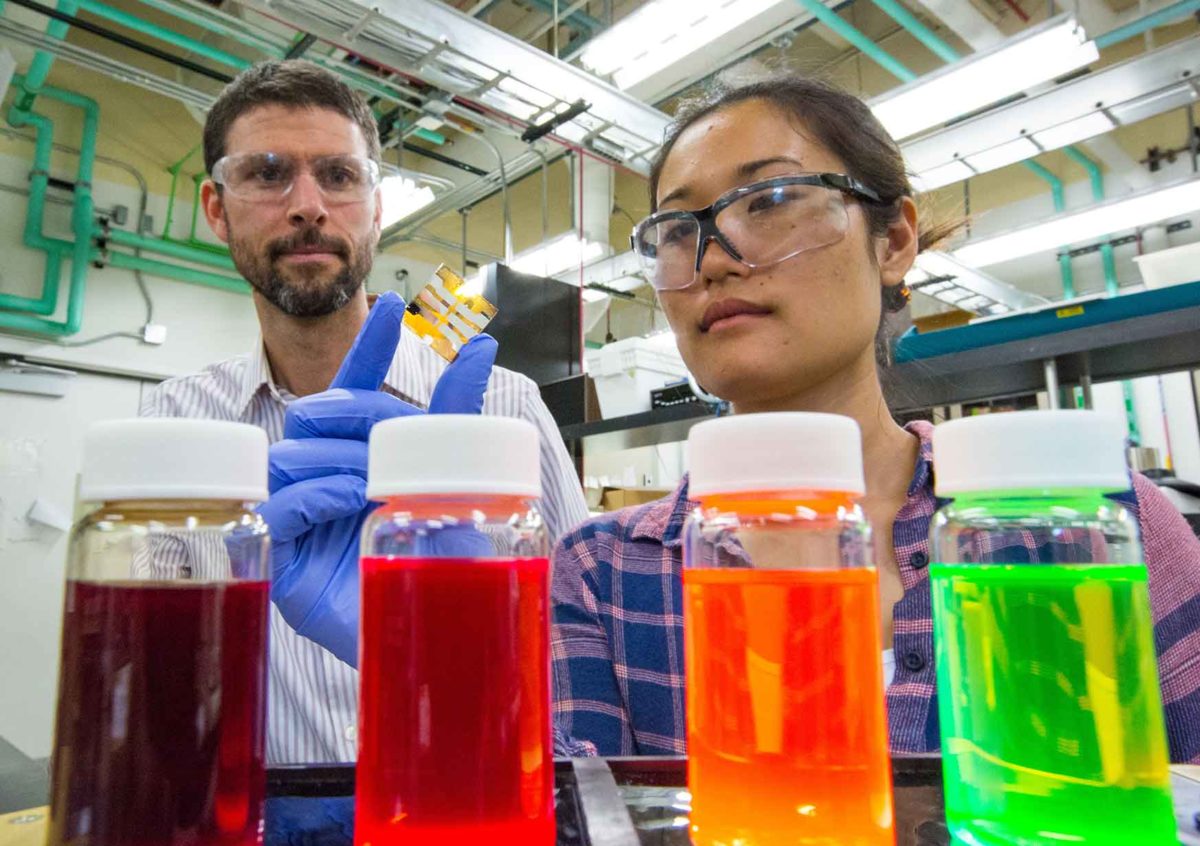Quantum dot solar cells first appeared on NREL’s conversion efficiency chart in 2010, when 2.9% efficient solar cells were created. Since then, better understanding of the technology has greatly increased its efficiency.
Thanks to their very small size – generally between 3 and 20nm according to NREL – quantum dot materials have become a popular area for research in solar. This latest paper from NREL, entitled “Enhanced mobility CsPbI3 quantum dot arrays for record-efficiency, high-voltage photovoltaic cells,” is published in the journal Science Advances.
The researchers state that their cell, made using cesium lead triodide, a material from the halide perovskite family, would best be deployed within multi-junction solar cells. “[The] voltage, coupled with the material’s bandgap, make them an ideal candidate for the top layer in a multijunction solar cell,” said Joseph Luther, project leader in the chemical materials and nanoscience team at NREL.
The team go on to speculate that their quantum dot cell could be paired with perovskite thin-film materials to achieve efficiencies comparable to niche solar applications such as satellites, at a cost lower than conventional silicon PV technology.
“Often, materials used in space and rooftop applications are completely different,” said PhD Student Erin Sanehira. “It is exciting to see possible configurations that could be used for both situations.”
This content is protected by copyright and may not be reused. If you want to cooperate with us and would like to reuse some of our content, please contact: editors@pv-magazine.com.




3 comments
By submitting this form you agree to pv magazine using your data for the purposes of publishing your comment.
Your personal data will only be disclosed or otherwise transmitted to third parties for the purposes of spam filtering or if this is necessary for technical maintenance of the website. Any other transfer to third parties will not take place unless this is justified on the basis of applicable data protection regulations or if pv magazine is legally obliged to do so.
You may revoke this consent at any time with effect for the future, in which case your personal data will be deleted immediately. Otherwise, your data will be deleted if pv magazine has processed your request or the purpose of data storage is fulfilled.
Further information on data privacy can be found in our Data Protection Policy.